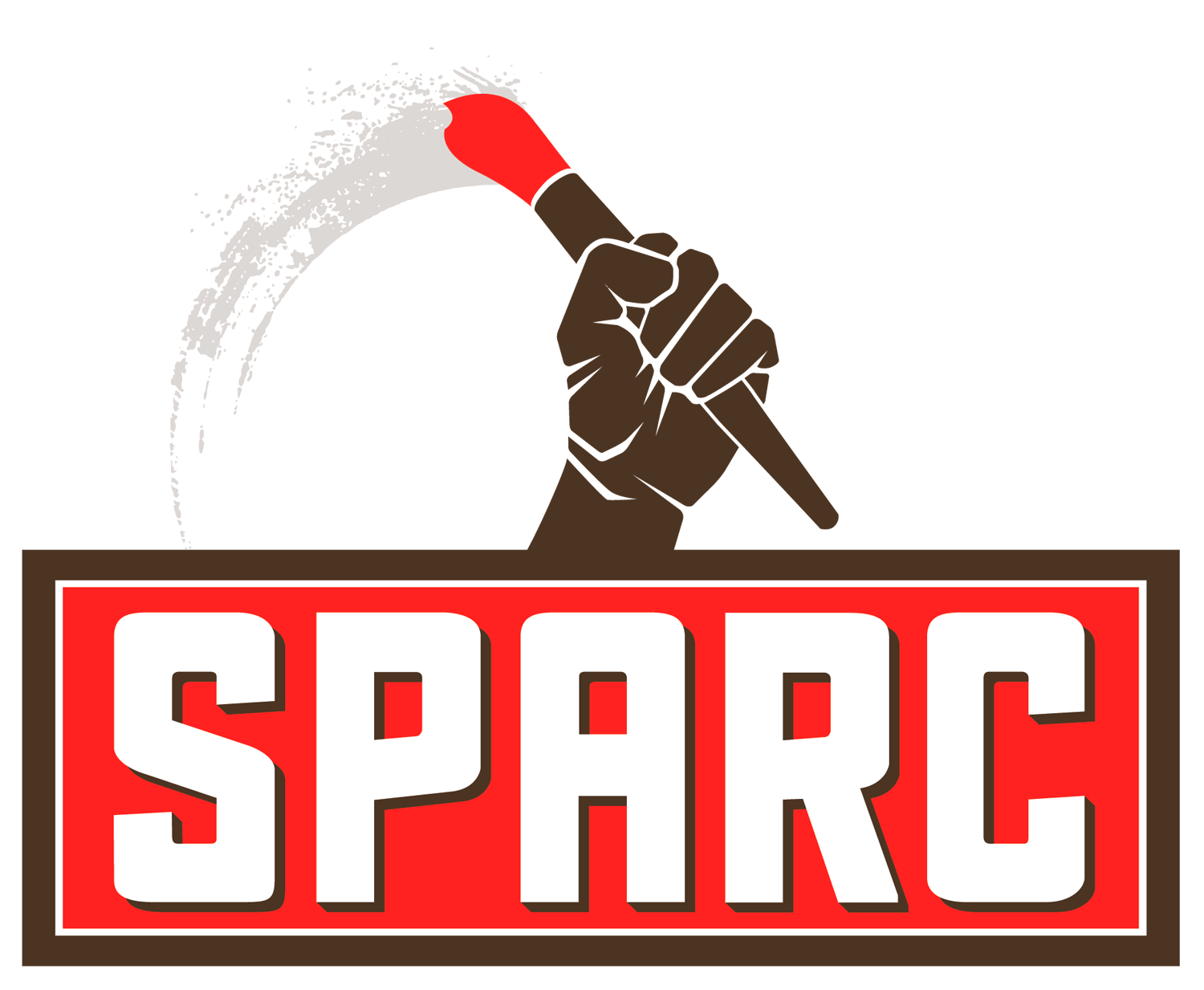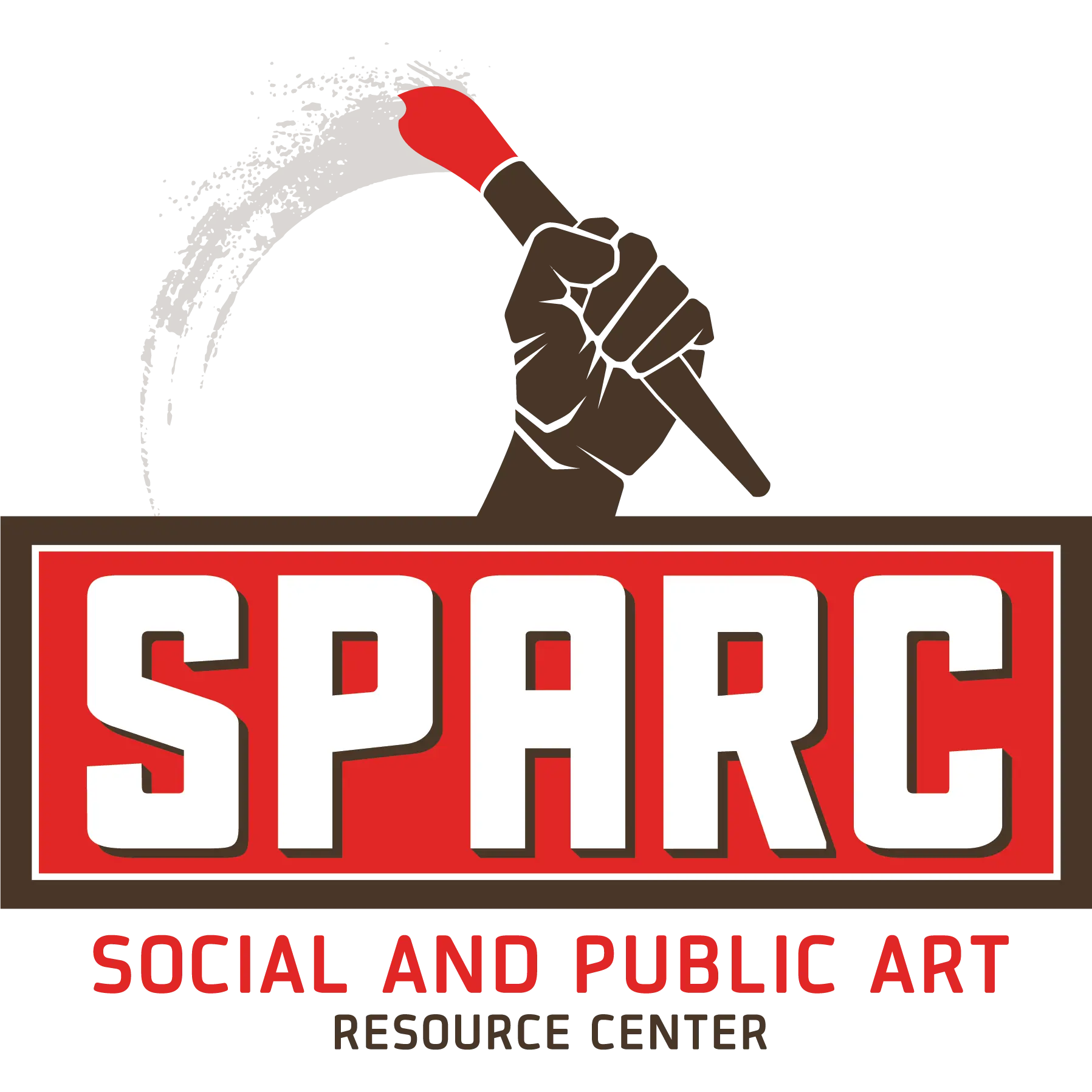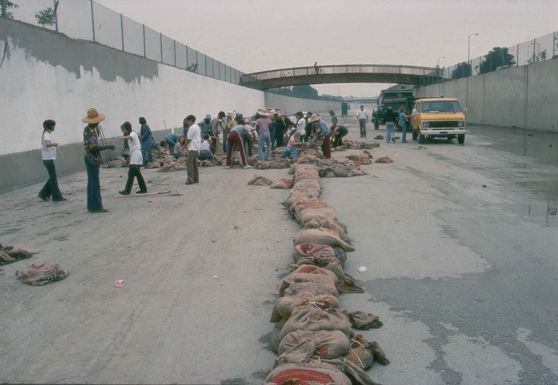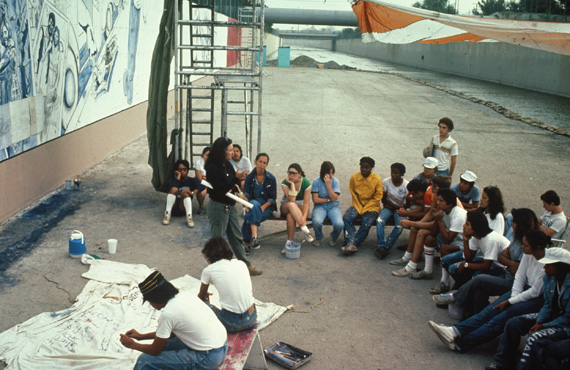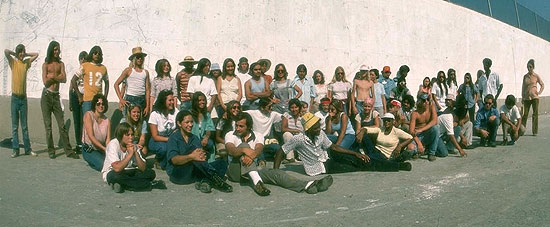The Great Wall – History and Description
< Go Back to the Main Page of The Great Wall
How It Happened
In 1974, the Army Corps of Engineers contacted Judith F. Baca about the possibility of creating a mural in the flood control channel as part of a beautification project that included a mini‑park and bicycle path. Two years later the alchemy of converting concrete eyesore into community treasure began.
Production of the Great Wall has involved the support of many government agencies, community organizations, businesses, corporations, foundations, and individuals. This support has taken the form of cash contributions, donations of supplies and equipment, and offered services. In the first several years, SPARC received a great deal of support for the project from governmental juvenile justice funding sources. In recent years, more private sector funding has made the Great Wall possible. Throughout the years, assistance has come from the Summer Youth Employment Program, the Army Corps of Engineers, and the Flood Control District.
The Longest Mural In The World
The Great Wall was already the longest mural after the summer of 1976 when a team of 80 youths referred by the criminal justice department, ten artists and five historians collaborated under the direction of Chicana artist Judith Francisco Baca to paint 1 , 000 feet of California history from the days of dinosaurs to 1910 in the Tujunga Wash drainage canal in the San Fernando Valley. But Baca, executive director of the Social and Public Art Resource Center in Venice, California, with a history of large collaborative mural projects behind her, was not ready to stop at 1910. Mural Makers worked in the wash again in the summers of 1978, 1980, 1981 and 1983. Each year they added 350 feet and a decade of history seen from the viewpoint of California ethnic groups: Their contributions and their struggles to overcome obstacles.
By 1980 the mural, dubbed “The Great Wall” rather than its official name “The History of California,” stretched more than a third of a mile and had consumed some 600 gallons of paint and 65,000 kid‑hours. With the completion of the decade of the Forties in September, 1981, the total length reached 2,085 feet while the number of young people who had worked on the mural rose to 185. In the summer of 1983, a new segment was painted, depicting the decade of the 1950’s. To date, the length of the Great Wall totals 2,754 feet, and the number of participating youths has reached over 400.
However impressive the part currently completed may be, it is only part of a work in progress. The completed mural, which will run for nearly a mile, will take history to the present and beyond to future panels which will be formulated by a planning commission composed of and veteran youth Mural Makers, artists and representatives for the Great Wall’s diverse sponsors.
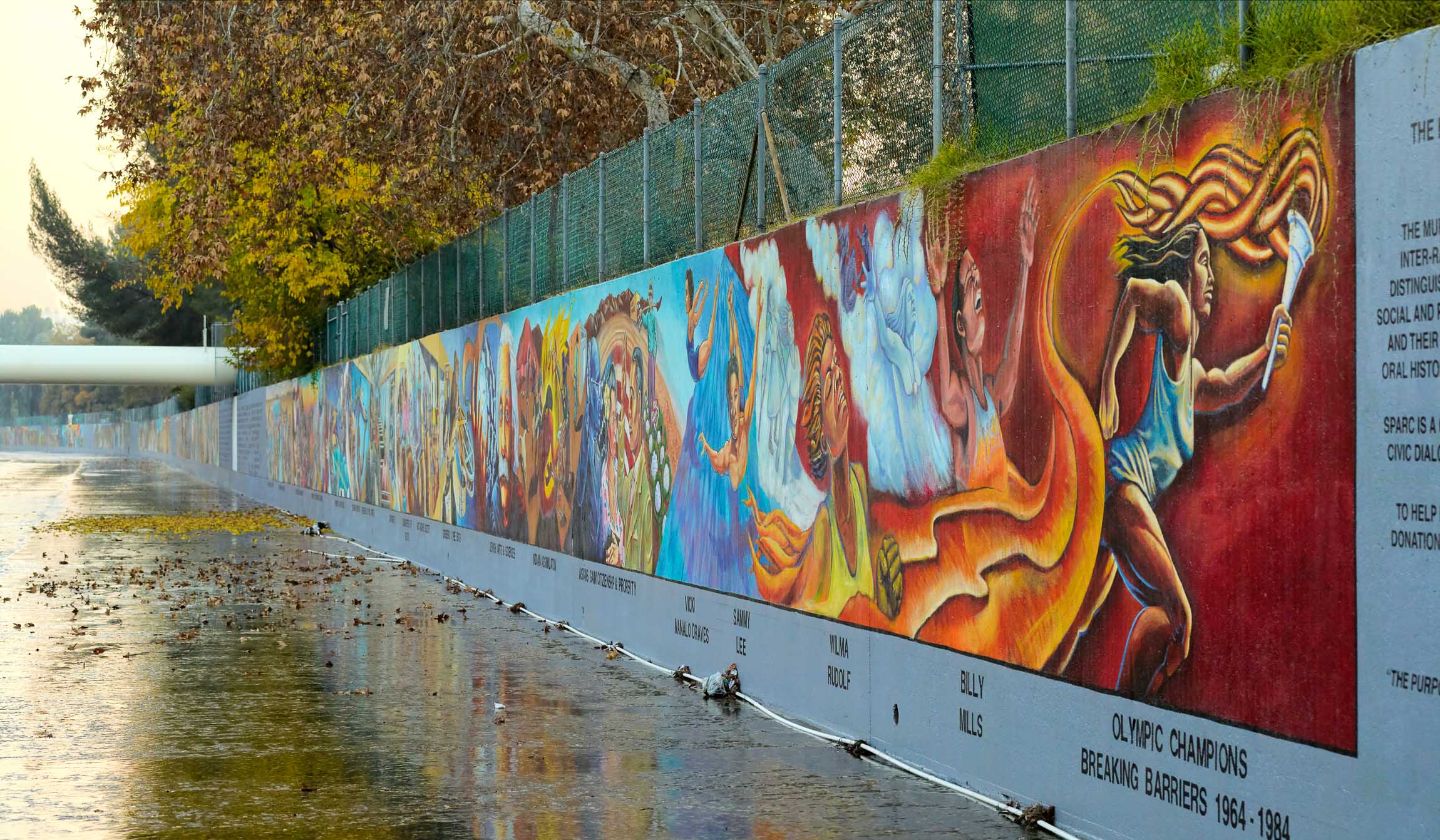
How It’s Done
Each section takes a full year to research, organize, and execute. Youth of varied ethnic backgrounds between the ages of 14 and 21 must be recruited and interviewed. Those selected are employed as assistants and participate in both the planning and execution of the mural. These Mural Makers, mostly from low income families, are paid through the Summer Youth Employment Program. In 1981 and 1983 additional youth were hired through a grant from the Jewish Community Foundation. Funds must be raised, research begun, artist supervisors hired. The youths are supervised by professional artists who work with them four to eight hours a day. They also receive art instruction, attend lectures from historians specializing in ethnic history, do improvisational theater and team-building exercises and acquire the important skill of learning to work together in a context where the diversity of their cultures is the focus.
After the subjects to be included are selected and sketched, finished designs are made by Baca amd a team of artists and youth selected to work under her direction on the “design team”. The finished drawings are blueprinted or turned into large drawings for pounce transfers. The blueprints are 1 X 2 foot drawings used to transfer the drawing to the wall. On site work begins with heavy labor: Sandblasting, waterblasting and sealing the surface. Grid lines are marked on the wall to match those on the blueprints, and the images are transferred‑a process that provides on‑the‑job math (as well as drawing) training for the kids. After the lines are drawn and painted a dark blue, a transparent magenta undercoat is applied over the entire surface. This serves to harmonize the colors as well as to cut the glare of the sunlight in the painter’s eyes. Snow blindness is a real hazard for the team on the massive wall. The colors are applied first as flat areas and then highlighted and shaded with two tones of the same color‑tri‑color blends ‑the painters call it. Finally, a clear acrylic sealer is applied to protect the painting.
The mural has been flooded five times between 1976 and 1983, with water rising, as high as Edison’s nose,” but it is not damaged by water. More dangerous is the effect of air pollution, years of exposure to direct sunlight, and fertilizer damage from the adjoining park lawns on the colors.
The First One Thousand Feet, 1976
Painted during the first summer of work in 1976, the first one thousand feet are divided into sections of 100 feet each. Although the content is highly integrated, each section was designed by a different artist under the general supervision of Judith Baca. Many problems were encountered in the beginning. Until the Mural Makers built a staircase down to the wash, people had to be trucked two and a half miles to the work site, bringing everything necessary with them, including water, food and toilets. The entire mural area had to be sandbagged so that the residual water would not make the work area slippery. Several tons of sand were trucked in, shoveled, bagged and then dragged into place.
Virtual tour and more information available on the Great Wall Institute Website:
< Go Back to the Main Page of The Great Wall
